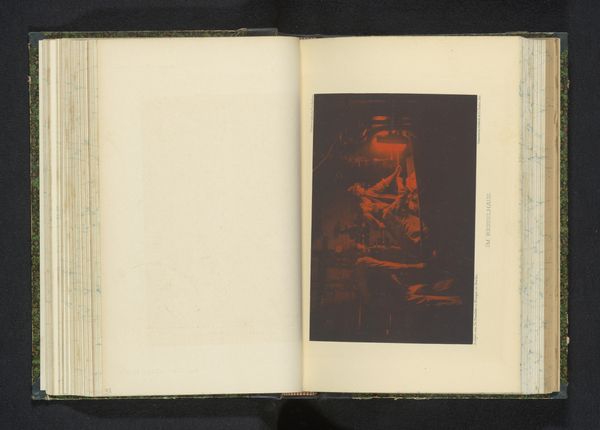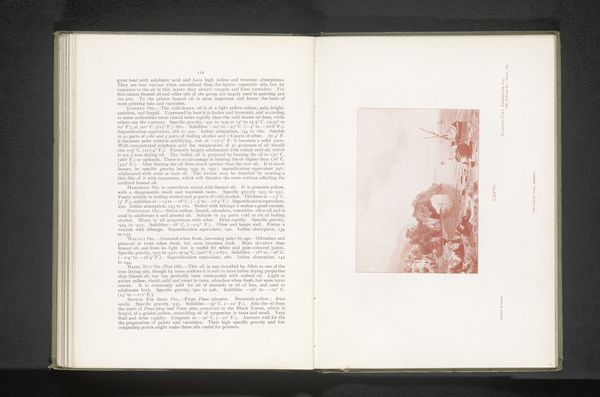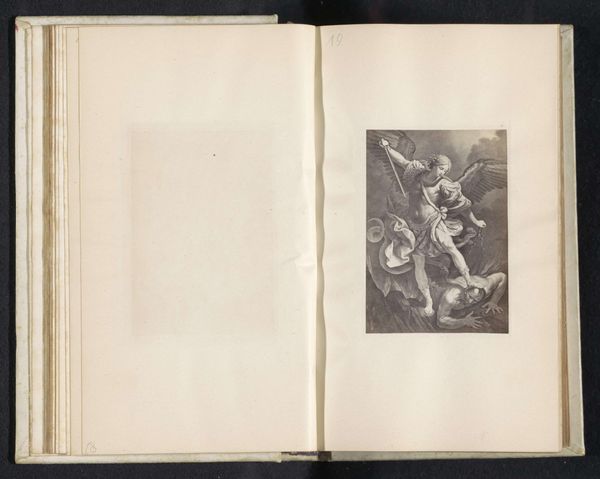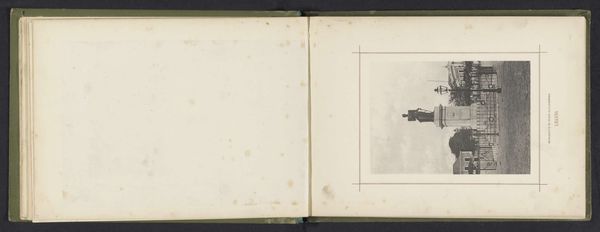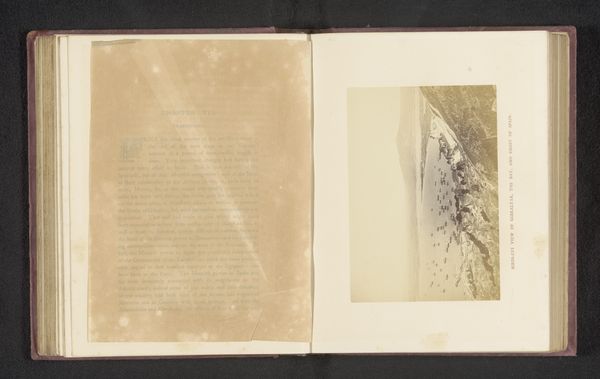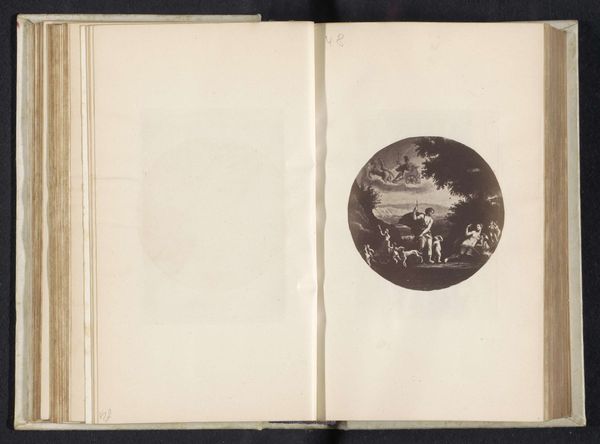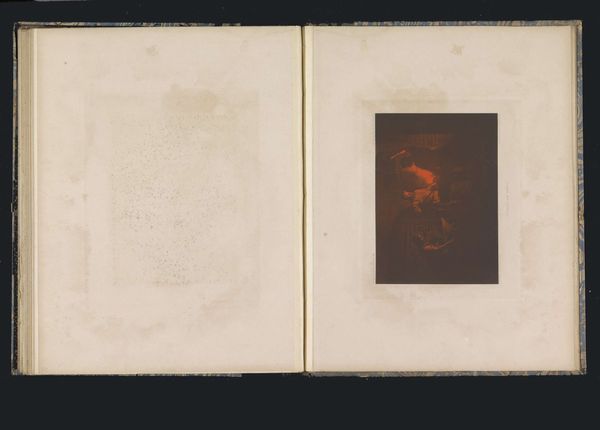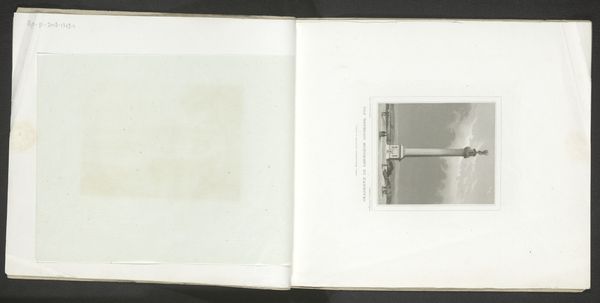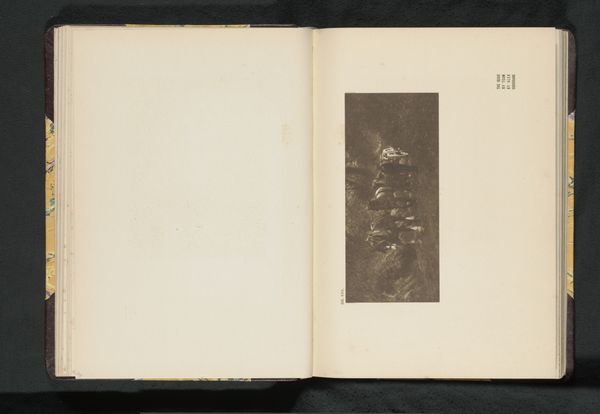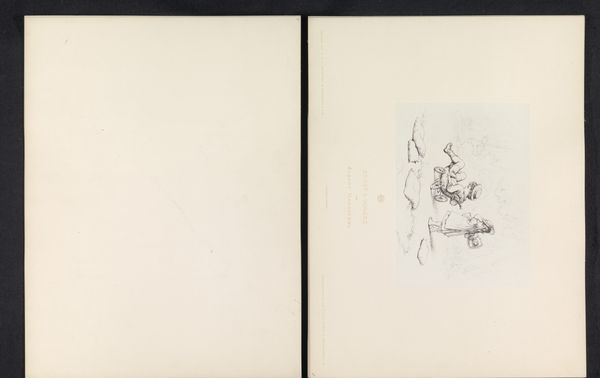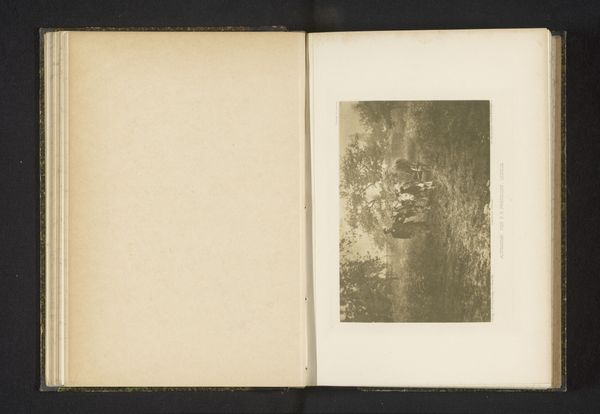
print, cyanotype, photography
#
aged paper
#
homemade paper
#
16_19th-century
#
paper non-digital material
#
paperlike
# print
#
book design
#
personal journal design
#
paper texture
#
cyanotype
#
photography
#
book mockup
#
publication mockup
#
naturalism
#
publication design
Dimensions: Image: 25.3 x 20 cm (9 15/16 x 7 7/8 in.)
Copyright: Public Domain
Curator: This mesmerizing work is Anna Atkin's "Vaucheria racemosa", made sometime between 1851 and 1855. It resides here at the Met. The piece is a cyanotype, a type of early photographic print. What catches your eye initially? Editor: It's the blue, obviously. That deep, almost melancholy indigo. It feels like holding a piece of the ocean in your hands, filtered through a Victorian dream. Curator: Absolutely! And that particular shade of blue, often called "cyan," has such a powerful connection to knowledge and scientific illustration of that era. Atkins wasn’t just creating art; she was documenting botanical specimens. Editor: True, it's like a ghost of scientific rigor, laid over with artistry. This algae, "Vaucheria racemosa", appears almost ethereal against that solid background, as if captured mid-dance, underwater. Is there anything known as the symbolism associated with algae? Curator: Algae, as a symbol, can mean different things to different people. The Pre-Raphaelites would likely portray algae with an enchanting yet slightly sinister lens; meanwhile, scientists see promise and naturalism with it. In that sense, it serves as a reflection on our multifaceted engagement with the natural world. The use of cyanotype speaks volumes too, being an emerging technology with a distinctly unnatural tinge; hence, a great deal of dialogue is opened up through these interesting tensions. Editor: It reminds me of spirit photography, that obsession with capturing the invisible. Atkins, unknowingly, seems to touch upon that too—revealing hidden realms. The stark whiteness against the solid color heightens the sense of discovery. Curator: A dance between the known and unknown. Each print in her volumes wasn't just a picture, but a testament to observation and artistic sensitivity, captured with this strikingly new method. In today's lens, it might strike a chord to modern discussions in scientific discovery and digital landscapes. Editor: Definitely. Looking at it now, it transcends mere documentation. It is about our continuous fascination with the mysterious forces that sculpt the unseen aspects of our world, brought to the light using photographic alchemy. Thank you!
Comments
No comments
Be the first to comment and join the conversation on the ultimate creative platform.
